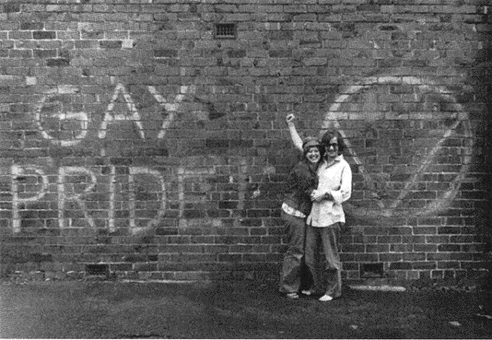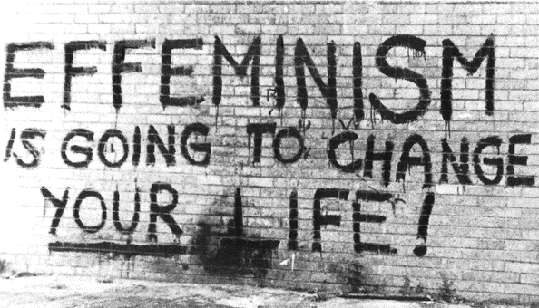|
"Melbourne - Queen City of the South" Melbourne Gay & Lesbian History series
| |||||||||||||||||
|
listen:
| |||||||||||||||||
|
In Melbourne in 1973, women's liberation and gay liberation came together in a vibrant, if somewhat short lived, organisation known as Radicalesbians.
It arrived in the city in the form of a group of Australian women, who had been in London, living and reading women's liberation - as one of them put it later: 'in that kind of marvellous, way ahead ethereal state that is born of no practice whatsoever'.
But they were coming into an environment where their ideas were sorely needed. Gay liberation was not always living up to its radical claims and ambitions. Liberationists were starting to find that sexism was a more robust enemy than they had expected and men, in particular, were finding it harder to shake off than they had hoped.
The first question to arise though was: what should politicised gay women call themselves? We made an actual decision to use the word lesbian - rather than camp, gay, woman-identified-woman to describe ourselves at that point. We also chose Radicalesbian as distinct from Radical feminist because we wanted to identify ourselves positively as lesbians ... Coming out was also a strong imperative in those days. Radicalesbian was about the most "out" and outrageous name we could confront our various oppressors with. Radicalesbians really took off at their conference - held at Sorrento in July 1973 - attended by some sixty women from all around Australia. Over a weekend they heard - and discussed and debated - papers on a range of topics. Many of these had to do with issues of what it meant to live as a lesbian the problem of monogamy, loyalty and hierarchy in relationships; bisexuality; lesbian identity; the possibility of a feminist culture - all were tackled in print and in debate. But there were quite basic problems, too: coming out to parents; whether you were a lesbian if you hadn't had sex with a women yet; the church; the lesbian attitude towards abortion.
The radicalesbian struggle was for a genderless society, one that did not differentiate on the basis of sex and which allowed people to relate to each other as people, rather than through their social and gender roles. The threat that this posed to the patriarchy promised a long hard struggle, but it was one that could begin in the here and now. 'We will not set up copies of marriage, of role-playing, of power dominance', the manifesto declared.
And, although, not strictly speaking
a Radicalesbian project, the attempt to set up a lesbian beat or represented
the kind of effort to change the world or to change the way we live
in the here and now that the group advocated. In 1974 word went out
- a particular site in Edinburgh Gardens in North Fitzroy had been declared
a lesbian beat. Women could meet there - as men had been doing for
uncountable years - an explore their sexuality. Which was all very
well - but most of those who turned up found that they knew each other.
Not at all how a beat is meant to work and the whole idea soon passed
into history and folklore. | |||||||||||||||||
| © text copyright Graham
Willett, Australian Lesbian & Gay Archives 2002 HOME | |||||||||||||||||
| |||||||||||||||||

